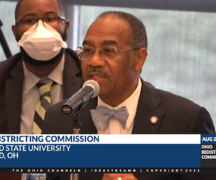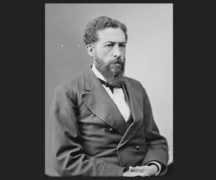Ohio House Republicans voted Thursday to add an administrative step in the contact tracing process likely to slow down one of the most effective tools known to combat the spread of COVID-19.
On a party line vote, House lawmakers passed Senate Bill 31, which requires health officials to obtain written consent from a person before they begin contact tracing, a decades-old process of determining who an infected person has been in contact with. State Rep. Haraz Ghanbari, R-Perrysburg, voted in favor.
Thursday’s episode is the latest in a series of House Republicans demonstrating an antagonistic relationship with the public health consensus during the coronavirus pandemic. Epidemiologists say the proposal adds an unnecessary step to the time-sensitive practice of contact tracing, and subsequently quarantining people believed to have been exposed to the coronavirus.
The contact tracing provision was adopted into an unrelated bill Wednesday regarding EMS workers and public records request.
In the last several weeks, House Republicans lawmakers have voted down a requirement for members and staff to wear masks while in the Statehouse as the Centers for Disease Control and Prevention advises. Similarly, they passed a bill to strip Ohio Department of Health Director Dr. Amy Acton of her powers to issue public health orders, which the Senate later rejected.
House Speaker Larry Householder, R-Glenford, said after the vote he’d be willing to hear out arguments against the idea, but acknowledged the written consent could down contact tracing.
“It might. I’ve never been involved in contact tracing,” he said. “I know there was a concern on our side of the aisle that we wanted to make certain that people’s personal information, their personal lives weren’t impacted. So we got what we could get.”
Rep. Nino Vitale, R-Urbana, has taken to social media to pump out baseless, conspiratorial claims about contact tracing, in which the government tracks phones using Bluetooth technology or will “forcibly remove you or a family member from your home if you only have one bathroom.”
The post in question has been shared more than 2,500 times as of Friday afternoon. Vitale did not respond to a voicemail left for him Friday.
Dan Tierney, a spokesman for Gov. Mike DeWine, said the written consent portion of the bill has been “flagged for review and could be a potential sticking point.” They will continue working with lawmakers on the issue.
An Ohio Department of Health spokeswoman declined comment.
What contact tracing is
Say you test positive for COVID-19.
The lab that processed that test will then notify the Ohio Department of Health as well as your local health department, which begins the contact tracing process, according to William Miller, an epidemiologist at Ohio State University.
Disease investigation specialists, just as they do with other infectious diseases like HIV, tuberculosis or syphilis, will reach out to what’s known as the “index” case and figure out who he or she has been in contact with, and for how long. It’s a voluntary process.
The investigators then reach out to those contacts to warn them they may have been exposed, but without revealing the identity of the index patient.
While privacy laws typically restrict the flow of medical information, Miller said public health laws allow agencies to be able to act to prevent other people from acquiring that infection.
Contacts of a person with COVID-19 could affect both them and their contacts, thus warranting the contact tracing process.
“If I have a cancer, there’s no reason for my doctor to ever tell someone else,” Miller said. “But if I have certain infectious diseases, particularly those that have severe consequences, then if the public health agency can’t have that information, you’re putting many other people at risk.”
“It’s a circumstance where the risk to the population outweighs the potential harm in terms of the privacy aspect.”
And while a disease like HIV spreads more slowly through sexual contact, COVID-19 can quickly leap from person-to-person.
“With COVID-19, it makes a huge difference,” Miller said. “We have to be able to move very, very quickly to identify people who may have been in contact.”
As of Sunday, more than 35,500 Ohioans have been diagnosed with COVID-19. At least 2,155 have died form the disease.
Tyler Buchanan contributed to this report.





